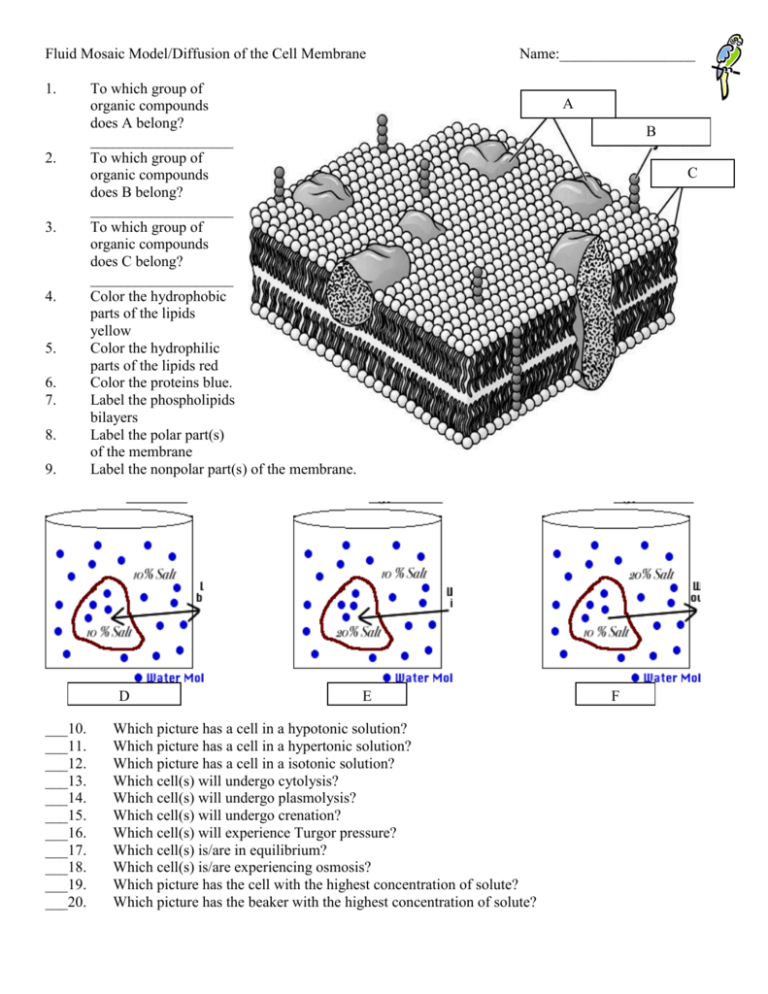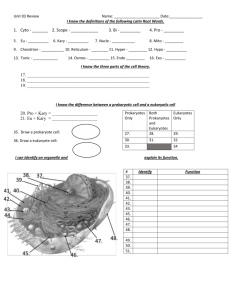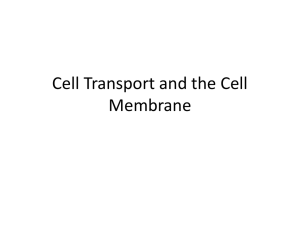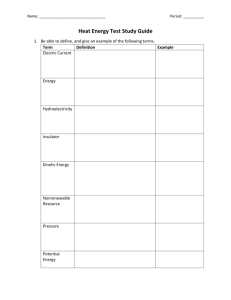Fluid Mosaic Model of the Cell Membrane
advertisement

Fluid Mosaic Model/Diffusion of the Cell Membrane 1. 2. 3. 4. 5. 6. 7. 8. 9. To which group of organic compounds does A belong? ___________________ To which group of organic compounds does B belong? ___________________ To which group of organic compounds does C belong? ___________________ Color the hydrophobic parts of the lipids yellow Color the hydrophilic parts of the lipids red Color the proteins blue. Label the phospholipids bilayers Label the polar part(s) of the membrane Label the nonpolar part(s) of the membrane. D ___10. ___11. ___12. ___13. ___14. ___15. ___16. ___17. ___18. ___19. ___20. Name:__________________ A B C E Which picture has a cell in a hypotonic solution? Which picture has a cell in a hypertonic solution? Which picture has a cell in a isotonic solution? Which cell(s) will undergo cytolysis? Which cell(s) will undergo plasmolysis? Which cell(s) will undergo crenation? Which cell(s) will experience Turgor pressure? Which cell(s) is/are in equilibrium? Which cell(s) is/are experiencing osmosis? Which picture has the cell with the highest concentration of solute? Which picture has the beaker with the highest concentration of solute? F The above four containers represent solutions with different concentrations of solutes. Answer the following questions using what you know about osmosis and diffusion. 1. Which container has the greatest concentration of solutes? 2. Which container has the least concentration of solutes? 3. The movement of solutes from an area of greater concentration to lesser concentration is called: 4. If you connected container A to container C, which direction would the solutes move? 5. If you connected container B to container D, which direction would the solute move? 6. Which two solutions are ISOTONIC to each other? 7. Which solution(s) is D hypotonic to? 8. Which solution(s) is D hypertonic to? 9. Which solution is hypertonic to all other solutions? 10. Which solution is hypotonic to all other solutions? 11. If you connected container A to container D, which direction would water move? 12. If you connected container B to container D, which direction would water move? 13. The movement of water from an area of few solutes to an area of greater solute concentration is called: 14. Label & Color the organelles below Color the cell membrane blue. Color the cell wall red. Color chloroplasts green. Color mitochondria yellow. Color the nucleus purple. Color the endoplasmic reticulum orange. What organelles did you NOT color? ____________________________________









